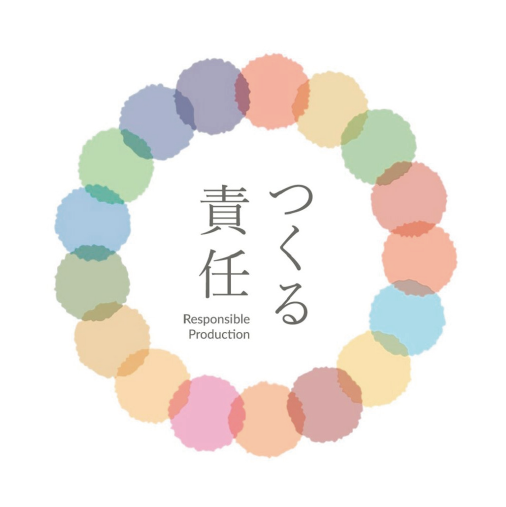
“KURASHIKIZOME®
- We use only safe dyes and chemicals approved by international standards (ZDHC2.0).
- Safety is maintained through periodic inspections by the Nissenken Quality Evaluation Center.
- We use as little water as possible and thoroughly purify wastewater before returning it to the Seto Inland Sea.

History of “KURASHIKIZOME®”
The history of the textile industry in the Bicchu-Bingo region began with cotton cultivation.
In the Kojima area of present-day Kurashiki City, reclaimed land that was originally ocean was used as salt fields and farmland, but it was not suitable for rice cultivation, so cotton, which is resistant to salt air, was widely cultivated.
Later, textiles such as Sanada-himo, Hakama-jiki (traditional Japanese hakama cloth), and obi (obi sash) were woven.
In Ibara City, Okayama Prefecture, indigo cultivation began in addition to cotton cultivation, and eventually became known throughout Japan as Bicchu cotton, an indigo-dyed cotton fabric.
In the Meiji period (1868-1912), the city was quick to adopt modern Western technology, and spinning companies were established one after another in Okayama and Hiroshima prefectures, and textile production flourished with the introduction of power looms.
From the late Meiji to Taisho periods, the production of tabi socks using power looms developed, which later led to the production of student uniforms and work clothes.
In the 1960s, denim production began in Ibara, and domestic jeans production began in Kojima, Kurashiki City, and soon after, the technology to wash and process jeans was born.
The Birth of “KURASHIKIZOME®” and the Creation of Unique Standards
The Okayama Textile Dyeing Industry Cooperative, the parent organization of Kurashiki Dyeing, was established in 1954.
At the time of its establishment, the association was responsible for the development of new technologies, etc. However, in response to the recent global increase in environmental awareness, the Kurashiki Dyeing Promotion Committee was established to seriously address safety and environmental responsiveness in the dyeing process and to create its own standards.
We also aim to use the minimum necessary amount of water and energy, and are thoroughly purifying wastewater. Wastewater from Kojima, Kurashiki City flows into the Seto Inland Sea. Because the Seto Inland Sea is designated as a national park, wastewater purification standards are set at a higher level than general wastewater standards.
Unique Standards Aimed at the World Level
We have adopted the international standard “ZDHC MRSL VERSION2.0”, which is much stricter than the Japanese standard.
In addition, we regularly request quality inspections to “Nissenken Quality Control Center” (an Oeko-Tex® certified inspection organization headquartered in Switzerland) to maintain reliable quality.
Hazardous Substances Regulatory Comparison Table
It is estimated that 25% of all chemicals in the world are used in the production of textiles. Some of them may be harmful to the body, such as carcinogenic or allergy-inducing substances, during the production stage. A wide range of chemical agents are essential during production, including dyes and auxiliaries.
| 日 本 Japan | 欧 州 Europe | エコテックス® EKO-TEX® | ZDHC | 岡山県織物染色 工業協同組合 Okayama Prefectural Textile Dyeing Industries Association | |
|---|---|---|---|---|---|
| 主な規制 Major regulations | 有害物質規制法 Toxic Substances Control Act | REACH | スタンダード100 STANDARD 100 | MRSL 2015 VERSION1.1 Group A | 倉敷染®ブランド KURASHIKIZOME brand |
| ホルムアルデヒド Formaldehyde | ○ | △ | ○ | ☆ | |
| 特定芳香族アミン Specific aromatic amines | ○ | ○ | ○ | ○ | ☆ |
| pH(水素イオン指数) pH (hydrogen-ion exponent) | ○ | ☆ | |||
| 重金属(含有) Heavy metals (contained) | ○ | ○ | ○ | ○ | |
| フェノール類 Phenols | ○ | ○ | ○ | ○ | |
| フタレート(可塑剤) Phthalates (plasticizers) | ○ | ○ | ○ | ○ | |
| 有機スズ化合物 Organotin compounds | △ | ○ | ○ | ○ | ○ |
| アレルギー誘発性染料 Allergenic dyes | ○ | ○ | ○ | ||
| 塩素化ベンゼン・トルエン Chlorinated benzene/toluene | ○ | ○ | ○ | ○ | |
| フッ素化合物 Fluorine compounds | △ | ○ | ○ | ○ | |
| 多環芳香族炭化水素 Polycyclic aromatic hydrocarbons | △ | ○ | ○ | ○ | |
| 残留界面活性剤 Residual surfactants | ○ | ○ | ○ | ☆ | |
| その他 主な規制物質等 Other major regulated substances, etc. | 抗菌加工・難燃加工 Antibacterial finishing and flame-retardant processing | 複数項目 Multiple items | 複数項目 Multiple items | 複数項目 Multiple items | 複数項目 Multiple items |
○:全面的に規制 Fully regulated
△:部分的に規制 Partially regulated
For the Kurashiki Dyeing® brand, “○” is a documented check and “☆” is an item for periodic analysis and testing.
“KURASHIKIZOME®” Safety Certification Mark
By affixing the “KURASHIKIZOME®” brand mark to products dyed and processed according to our own standards,
This allows consumers to select and use our products with peace of mind.

About brand mark
When the upper and lower curves are viewed together, the Hinomaru (rising sun) appears.
The stripes at the bottom represent Kokura-ori, with its distinctive vertical stripes, and the Seto-ohashi Bridge.
This design expresses the thoughts of Kurashiki Dyeing: “Okayama,” “tradition,” “strength,” “stability,” and “high quality” through a combination of simple shapes.
The traditional indigo color called “Japan blue” represents “Japan,” “dyeing,” “Okayama’s textile industry,” and “integrity.
